Philips LED lamp overview: types and characteristics, advantages and disadvantages + consumer reviews
Among its analogues, Philips LED lamps occupy first place in European and world markets, meeting the main requirements of light carriers: efficiency, ease of use and reliability. Phillips is credited with electrical products up to 50 thousand hours of continuous glow and high quality.
The company offers a wide range of LED lights, and it’s rather difficult to choose the right option, agree? In order not to get confused in the variety of offers, before going to the store, it is advisable to learn more about the features of the use of various lamp models.
We will help you sort out the Philips product line. The article provides a detailed classification of LED lamps, their technical characteristics, advantages and disadvantages are indicated. Real user reviews will evaluate the appropriateness of such a purchase.
The content of the article:
Why Philips?
Philips has been providing the Old World with electric bulbs for 130 years, and nearly 120 of them operate on the international stage. The idea of the founder was originally aimed at creating and manufacturing the attributes of light, and the first production of the factory was precisely lamps for lighting.
Today, the company has on its account expensive medical equipment, branded devices for everyday life. But the light line did not stop even for a minute, maintaining its priority to this day, which makes the brand the oldest lighting supplier in the world.
By the way, the founder of the company was none other than the cousin of Karl Marx, the author of Capital, Gerard Philips.
He hardly talked with the famous uncle, but with his father and brother in less than 25 years he brought the family enterprise to royal status, and by the end of the 20th century he received the posthumous title of the best businessman of the century.So the entrepreneurial vein of the relatives was clearly in the blood.

Philips lamps are divided into halogen, fluorescent or energy-saving and LED. Halogens are used mainly for cars, and they are also involved in accent spot models.
Luminescents at one time replaced the usual incandescent bulbs, but several years ago they were supplanted by revolutionary LEDs, so-called LEDs. They are the ones that are best suited for household lighting from the entire Philips light line.
Features of Philips LED bulbs
The company creates standard LED products, including a novelty Essential, filament classics and advanced models Sceneswitch. The presented models are subdivided according to the forms that may be inherent in each line of lamps, and according to their properties.
LED Lighting Forms Philips Lighting
In total, there are six forms for Philips LEDs: pear-shaped, super-obvious, drop-shaped, balls, reflectors, linear.
Each type is suitable for a specific result:
- Pear-shaped - repeating the familiar design of old lamps, but with a new filling. Features: simple, affordable, durable - service life up to 10 years.
- Obvious - curly and elongated. Features - compact, beautiful, ergonomic, ideal for multi-track chandeliers, sconces, small spotlights.
- Teardrop shaped - the same as pear-shaped and svezhevidny, but with improved indicators. For example, the durability here will be 15 years, and the shape is more accurate.
- Balls - look like an ideal ball, a decorative alternative to standard models.
- Reflectors - LED analogues of halogen spotlights, but more reliable and high-quality. Form a bright light ray without shadow artifacts.
- Linear - light tubes, familiar from childhood by fluorescent lamps.
The Philips brand lacks another well-known form of LED-lamps - corn. Today, this type of company is deprecated.
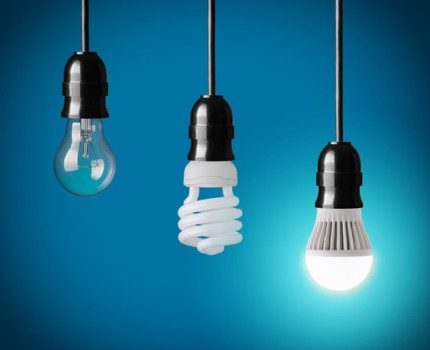
Rumor has it that the main “Philips” want to sell their lamp business and focus on the rest. But Philips-Lighting engineers tirelessly work on new varieties of light sources and invent revolutionary methods. Therefore, these products will always be available.
Specifications and classification
According to technical characteristics, the following options are distinguished:
- dimmable lamps or non-dimmable - in the first case, the brightness can be adjusted during use, in the second - no;
- warm color spectrum - shines with an orange, yellow or soft white tint, is marked 2000-6000 K (Kelvinov);
- cold color spectrum - “hospital” white or almost blue glow, marking in the range of 6000-10000 K;
- with standard base - have the usual screw base, which fits most ordinary cartridges for mounting, in Russia they are presented in 2 sizes - E27, classic and E14, reduced (minion);
- with non-standard base - on the G-pin connectors, namely G13, GX53, GU10, GU5.3.
Two more indicators - power / watt, and light output / lumen. The first determines the energy consumption, the second - the brightness coming from the power.
In ordinary incandescent bulbs, one parameter was responsible for both parameters - watt. But the LED lamp spends very little power, so it has a different scheme for determining light efficiency.
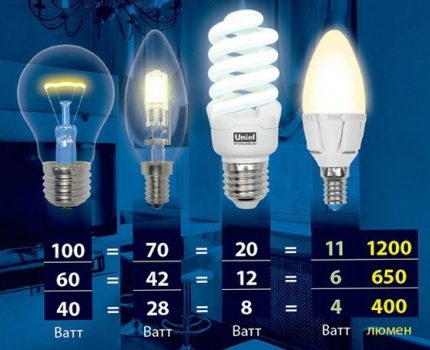
Philips modern LED lamps are designed in the power range from 2 to 40 W with brightness from 130 to 5000 Lm. The energy efficiency coefficient of products (lumens divided by watts) is on average from 80 to 110, which now meets a very high standard. For example, for tungsten "old women" it is only 10 Lm / W.
Differences in species and forms
This category includes a large family of diverse LED lamps for the most common life situations. Articles vary in form, power and color temperature, the rest are classic LED analogues without separate frills.
Pear-shaped for easy use
The most numerous row that enjoys the most attention. Suitable for use in everyday life - in kitchens, bathrooms, toilets, hallways, pantries, but with one condition - the carrier must be located in shades or chandeliers where the cartridge looks down.
The device of standard LED lamps is such that they illuminate exactly the area where they are directed, leaving opposite areas in the shade.
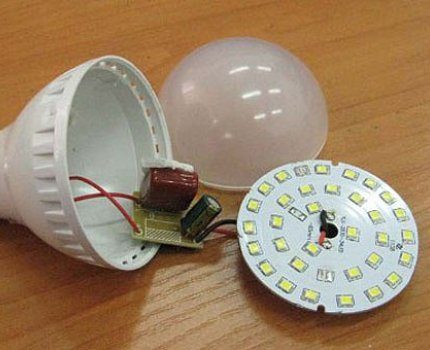
Pear-shaped prototypes combine different characteristics:
- colors - warm white, white, cold daylight;
- power - from 1.7 to 40 watts, or from 15 to 300 watts in the equivalent of a conventional incandescent bulb (LN);
- light intensity - from 130 to 5000 Lm.
The daily range does not contain options for dimmers, this option must be sought in more expensive models.
All standard Philips “pears” have a traditional base E27but there is one model with LED bulbs E40. This is a real giant with 40 LED watts and 5000 lumens. The color shade is cold daytime or 6500 K. It is delivered only on pre-order, but the same versions with the usual base are available freely.
Non-standard samples of “pear”
Philips is constantly looking for unusual solutions for customer comfort. One of them is a convenient 1.7 T mini T25 for use in household electrical appliances, refrigerators, and hoods. For this, she has a small base E14 and a special compact form that allows you to fit in hard-to-reach places.
However, the bulb is not intended for lighting ovens, as it is not heat-resistant. For these purposes, halogen analogues are better suited.
For connoisseurs of advanced technologies, an model that was collected several years ago will be interesting Slim style. It has a much more perfect principle of heat dissipation, which no competitor has been able to obtain before, an absolutely atypical design and the same affordable price.
As a result, the light bulb saves even more energy and completely eliminates injuries and burns. And most importantly - she has a service threshold of 25 years.
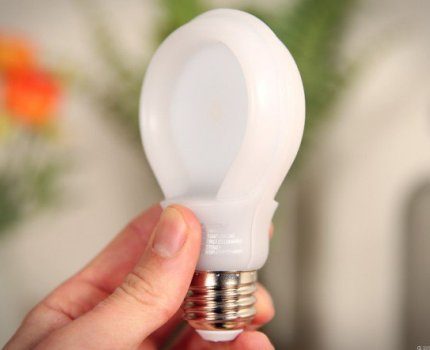
For customers who want modern technology in the house, but would not like to part with the usual forms, created Master ledbulb. This is a transparent bulb on dot diodes, fully repeating the image of an incandescent bulb.
Combines the graceful design of the near past with the capacities of developed modernity, and the service life is declared up to 40 years!
Evident for special occasions
The lineup with the largest number of new products is its purpose: ensuring the operation of small lamps, multi-level chandeliers, sconces, table lamps. The series is constantly updated with new combinations of base size, color temperature and capacities, which allows you to select sets for any needs.
Main characteristics:
- the size of the bases is predominantly E14, but there is a 6.5-watt analogue with E27;
- the power scale varies from 5.5 to 6.5 watts, which corresponds to 50 and 60 W LN;
- brightness scale - 550 (warm white), 600 (cold white) lumens;
- there is no light control in point prototypes.
Contains two models with lithium cells at 4 and 5.5 watts. The LEDs in them are assembled and raised in the form of a burner on the leg, so the outer casing of the samples is transparent. Accordingly, the scattering of light does not occur in one direction, but evenly, as in the usual glass bulb.
Beautiful lamp-candles look good as a decor in the interior. They are inexpensive, durable, convenient for use in non-standard fixtures or equipment. The only condition for their full functioning is the lower orientation of the supporting cartridges.
Teardrop Varieties and Balls
A series of drops almost repeats a pear-shaped and svezhevidnoy theme, but differs in a more rounded silhouette, making it possible to use it in confined spaces. In addition, the maximum service life of the product has been increased - provided that combustion occurs 3 hours a day, the LED drop can work up to 15 years.
To give the interior a special style, ball-shaped cones are suitable. The range of standard LED spotlights is currently represented by two matte patterns of 8.5 and 11 watts per E27. They are equal in brightness to ordinary bulbs with a power of 70 and 85 W; they have options with a cold and warm spectrum of radiance.
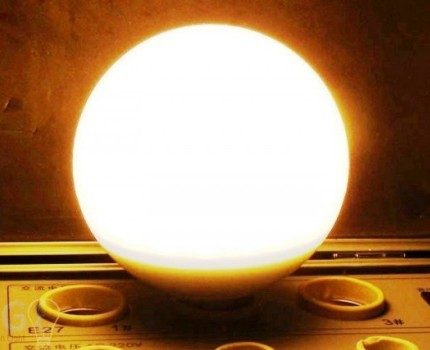
The dot types of LED balls have only a matte surface, since a transparent diffuser is not effective for this type of electronics. Transparent analogues should be sought in the filament lamp section. Here they go called Filament bulb.
Spots and Reflectors
Philips has a small category of LED lights for local lighting or zoning. This includes accent spots and ceiling, kitchen, and bathroom reflectors.
The convenience of Philips spots is that they are made both in pin variations, when the base is connector G, and in household ones, under simple E27 cartridges.
In addition, there are two types of case color design - white, black, so they are easy to pick up for any interior.
Features of Philips Philips Accent LED Bulbs:
- types of connectors for installation - GU10, G13, GU5.3, E27 on typical spots, GX53 on multizone reflectors;
- color range - up to 6500 K, this is the coldest spectrum of the series;
- dimming is not possible on analogs with pin connectors.
Philips engineers have achieved that the light brightness of the supplied spot reflectors is not inferior to their halogen counterparts, which is not found in other manufacturers.
Linear for replacing fluorescent
The Linear Line is a series of LED tubular LEDs on the G13 connectors, which are designed as an effective alternative to Philips-TL fluorescent predecessors.
Compared to obsolete relatives, linear LED lamps able to burn all 15 years from the date of sale, while they are absolutely harmless, since they do not contain mercury.
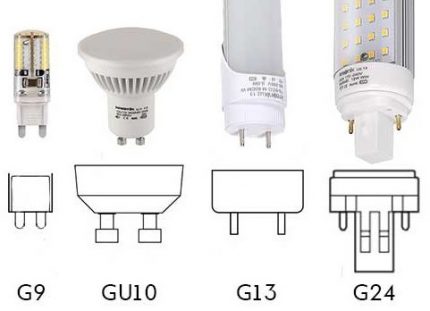
You should not think how fluorescent lamps differ from other fluorescent ones that come across in the descriptions.In fact, these are two names of one type of product. There is a third - gas discharge lamps. Some suppliers call them plasma, which also corresponds to the device.
Option for all Philips-Essential occasions
The new series, which is the most optimized version of standard LED prototypes, so it costs slightly less. It is ideal to use in the most ordinary places, for simple lighting of domestic areas. The shape of the lamp is directional, pear-shaped, under the standard cartridge E27.
The range consists of combinations:
- cold daylight;
- White light;
- 5, 7 and 9 W (40, 55, 65 W incandescent bulbs);
- the brightness coefficient is from 300 to 650 Lm, which corresponds to the average.
The established period of operation is 8 years, the light beam is scattered within 130 degrees.
Cost Essential - the main advantage of the line. Compared with a wide range, the lite series can cost 2, or even 4 times cheaper.
However, there is a drawback. Due to its simplicity, the lamp has become a favorite object of fake unscrupulous manufacturers. However, it is not difficult to determine the forgery if you carefully study the topic before buying, and at the time of purchase, packaging.
Filament Bulb or Modern Vintage
The Philips-LED classic LED lamp design implies directional lighting that only looks down or only up, leaving adjacent areas darkened. This creates inconvenience when it is desirable to illuminate the entire space evenly.
The problem was solved by an innovation in the form of filament LCD-lamps repeating visually a traditional retro-bulb.
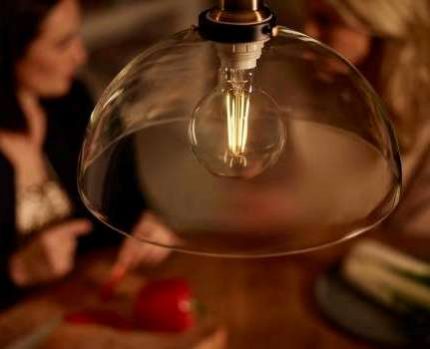
The idea is based on almost the same scheme - a light string sealed in a glass flask, around which there is a cooling gas. Only the thread is not tungsten, but diode. Instead of inert gases, more suitable helium.
A miniature transforming board is sewn into the basement, which completely transfers filaments to the category of modern technologies, instead of old developments.
Line Filament bulb or LEDClassicas the company calls it, it looks bright not only in terms of lighting, but also as a very fashionable decor. Stylish design, imitation of vintage, yellow, together with 90% energy saving make it not the cheapest Philips product.
Some models cost up to $ 15 or 850 rubles, while the point counterparts barely reach $ 2.
However, the filament line offers a wide range of combinations:
- the form - completely transparent pear, ball, candle, drop;
- cap - E27, E14;
- color temperature - yellow, warm white, super warm white;
- power - from 2 to 8 W (corresponds to 25-60 W LN);
- brightness - up to 806 Lm;
- life time - 15 years.
Almost all filament patterns are dimmable. Philips-Bulb features in that their super-obvious models of size E14 have a small luminous flux, and they will show maximum efficiency only in multi-tube designs like large chandeliers.
When used in sconces and floor lamps, for which they are mainly intended, it will, for example, read darker than usual. But the warm atmosphere that they create is difficult to overestimate.
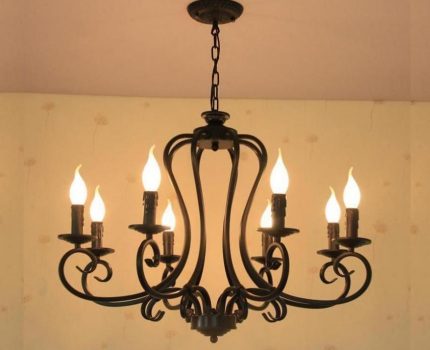
Unfortunately, the brand does not yet contain official samples, where the glow imitates the burning of a real flame, as some offers from other manufacturers. But the work does not stand still, so soon, perhaps, the lineup of the concern will replenish with a new article. New items can always be found on the official website.
New SceneSwitch Line
To regulate the intensity of lamp shine, you need a special relay in the switch of the lamp or chandelier and the corresponding LED lamp with dimming driver.
Then the lighting can be dimmed at will or made very bright. However, the color temperature will still remain within the claimed model.
Dutch engineers went further and came up with an unusual line Sceneswitch. This is one lamp that combines several functions at once without the introduction of special elements.
Having installed it in the cartridge, it is enough to click the switch once to get a cold, neutral, office light, and then turn it off and click a second time to switch to a warm, soft color of a sunny day.
The line is presented for today, and this is 2018, with three prototypes:
- pear-shaped standard, on the base E27, power 13-15 W or 100 W equivalent to incandescent bulbs;
- the same, with a power of 9 W (or 70 W LN);
- teardrop-shaped standard, on the E27 base, power 6.5 W (or 60 W LN).
The model has a limitation - it cannot be combined with light control. If you have to put it in such a lighter, the regulator knob must be kept only at 100%.

The SceneSwitch feature allows it to save even more energy, since combustion will not always be at its maximum. As a result, having screwed such a model into a cartridge, you can forget about it for 15 years, the manufacturer claims. But negative reviews from happy users, indeed, have not yet.
Advantages and disadvantages of Philips LED lamps
Philips LEDs are considered an elite among modern brands of home lighting.
Along with all the advantages of diode technologies, they invariably demonstrate:
- complete absence of flicker in standard LEDs, while cheap analogs do not comply with these standards;
- competent principle of heat transfer - the cones do not heat up, touching the lamps does not threaten burns, the products never explode;
- durability - Philips LED lamps work quietly in the cold;
- proximity to nature. Provide consumers with a CRI color rendering index of 80 equal to sunlight.
And of course, the key difference between LEDs and recently rising fluorescent lamps was that LEDs do not need mercury content like luminescents. They are absolutely safe and easy to dispose of without any conditions.
What relates to the disadvantages:
- They may fade over time if purchased under a label not of original manufacturers. As a rule, it is better to take released in Europe.
- Sometimes they fail due to burnout of the driver-converters at the base of the base. The reasons are frequent power surges, cartridge fouling, you need to review the wiring in the controlled room and clean the contacts of the lampshade.
- They do not like dampness and tightness. Engineers are working on this.
Also, they are more expensive than many brands. But buyers do not attribute this to shortcomings.
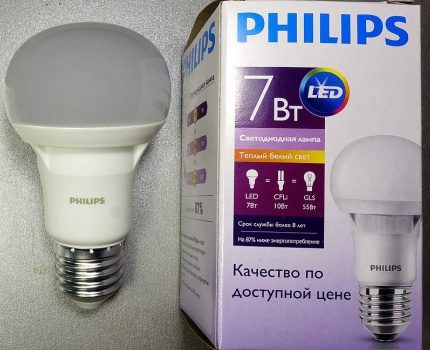
To really appreciate the quality of this famous brand, you need to know for sure that the original is in the hands, and not a fake. Learning to distinguish them is easy according to the instructions on the Internet.
In addition, several dozens of representative offices around the world are engaged in direct production, including China itself. And although the company's management is responsible for the high quality of its products regardless of the country of manufacture, it is better to rely on the nuances when buying.
Real customer reviews
We did a little research and found that real people are talking about the Philips brand.
“He was very seriously puzzled by the light in the aquarium. Luminescent quickly failed and heated water strongly, which, accordingly, evaporated. Replaced them with 6500K LED floodlights. Water evaporates a little, and aquatic vegetation has begun to grow actively! ” (January 30, 2016).
“I suffered for a long time with LEDs for a classic crystal chandelier. For incandescent bulbs, I'm not Rockefeller. Before the LED lamps, he endured "housekeepers", as soon as the LEDs became available, he immediately bought it. Why so much attention? Crystal does not “play” with housekeepers; it gives a spot too bright. With LEDs it’s better, but it’s hard to pick out the spectrum. As a result, he was saved by filaments. The chandelier began to play, there were no shadows from the ugly bulbs, the atmosphere became exceptional ”(March 12, 2017).
“First I bought Era-Econom, then diode Philips. The difference is huge, both in cost and in quality. I will gradually change everything to Philips ”(12/26/2017).
“It turned out to be too bright, it took 9 watts, it shines at 100. It takes a long time to select the spectrum. And there is very little information on the packaging, it is not clear without preparation. Only Philips suffers such secrecy ”(January 7, 2018).
From other observations, it is useful to advise you not to put “LEDs” in the baths, because they heat up on their own, and at high temperatures they will completely fail, and the Philips lamps were called along with other manufacturers.

And also remarks slip on the faint glow of the bulbs after turning off. However, you should be aware that the latter does not refer to the lack of a brand, but to the errors of external wiring.
If you decide to replace the old lamps with economical LED-lamps, we recommend that you read the article on choosing LEDs.
Conclusions and useful video on the topic
A detailed but not boring test by a fun blogger dedicated to Philips LED lamps:
A visual demonstration of SceneSwitch, two times of day in one:
How to independently replace Philips fluorescent tube lamps with LED analogs on different types of lamps, professional instructions:
There are disputes that one lamp cannot serve 15 years, and the price of one copy of LED-Philips is such that it will take more than a thousand to provide the whole house or office. Will such an expense really pay off?
It all depends on individual circumstances. Maybe you should not translate everything around to LED lighting. But in the most active areas, a high-quality Philips lamp can reduce electricity costs to nothing.
Have something to supplement, or have questions about the selection and use of LED-lamps from Philips? You can leave comments on the publication, participate in discussions or share your own experience using such bulbs. The contact form is located in the lower block.

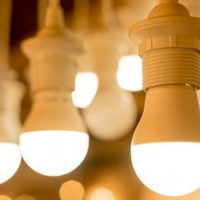 LED lamps Ecola (Ecola): an overview of the line, advantages and disadvantages, consumer reviews
LED lamps Ecola (Ecola): an overview of the line, advantages and disadvantages, consumer reviews 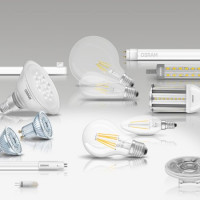 Osram LED lamps: reviews, advantages and disadvantages, comparison with other manufacturers
Osram LED lamps: reviews, advantages and disadvantages, comparison with other manufacturers 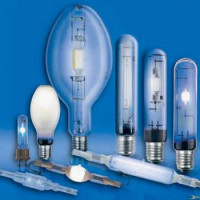 Mercury lamps: types, characteristics + an overview of the best models of mercury-containing lamps
Mercury lamps: types, characteristics + an overview of the best models of mercury-containing lamps 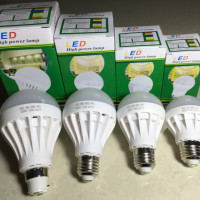 Characteristics of LED lamps: color temperature, power, light and others
Characteristics of LED lamps: color temperature, power, light and others 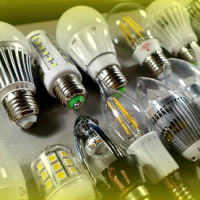 LED lamp bases: types, marking, technical parameters + how to choose the right one
LED lamp bases: types, marking, technical parameters + how to choose the right one 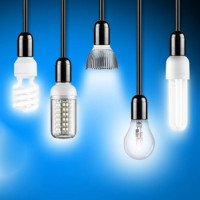 What types of bulbs exist: an overview of the main types of lamps + rules for choosing the best
What types of bulbs exist: an overview of the main types of lamps + rules for choosing the best  How much does it cost to connect gas to a private house: the price of organizing gas supply
How much does it cost to connect gas to a private house: the price of organizing gas supply  The best washing machines with dryer: model rating and customer tips
The best washing machines with dryer: model rating and customer tips  What is the color temperature of light and the nuances of choosing the temperature of the lamps to suit your needs
What is the color temperature of light and the nuances of choosing the temperature of the lamps to suit your needs  Replacement of a geyser in an apartment: replacement paperwork + basic norms and requirements
Replacement of a geyser in an apartment: replacement paperwork + basic norms and requirements
Personally, I have long been buying Philips LED lamps for a long time, despite the fact that they are obviously more expensive at a price. But! All the declared characteristics they fully comply with, they serve for a long time, which means they are made of reliable components.Previously, I saved and bought Chinese, so they burned after a few months, not one worked longer than a year. I also don’t get involved with domestic ones, I take products of proven quality.
What kind of blunders in the article that the color rendering quality of Philips 80 lamps matches sunlight?
Ra 80 is a poor color rendering. Good ra 100, but her neither Philips nor Osram practically do not, alas.